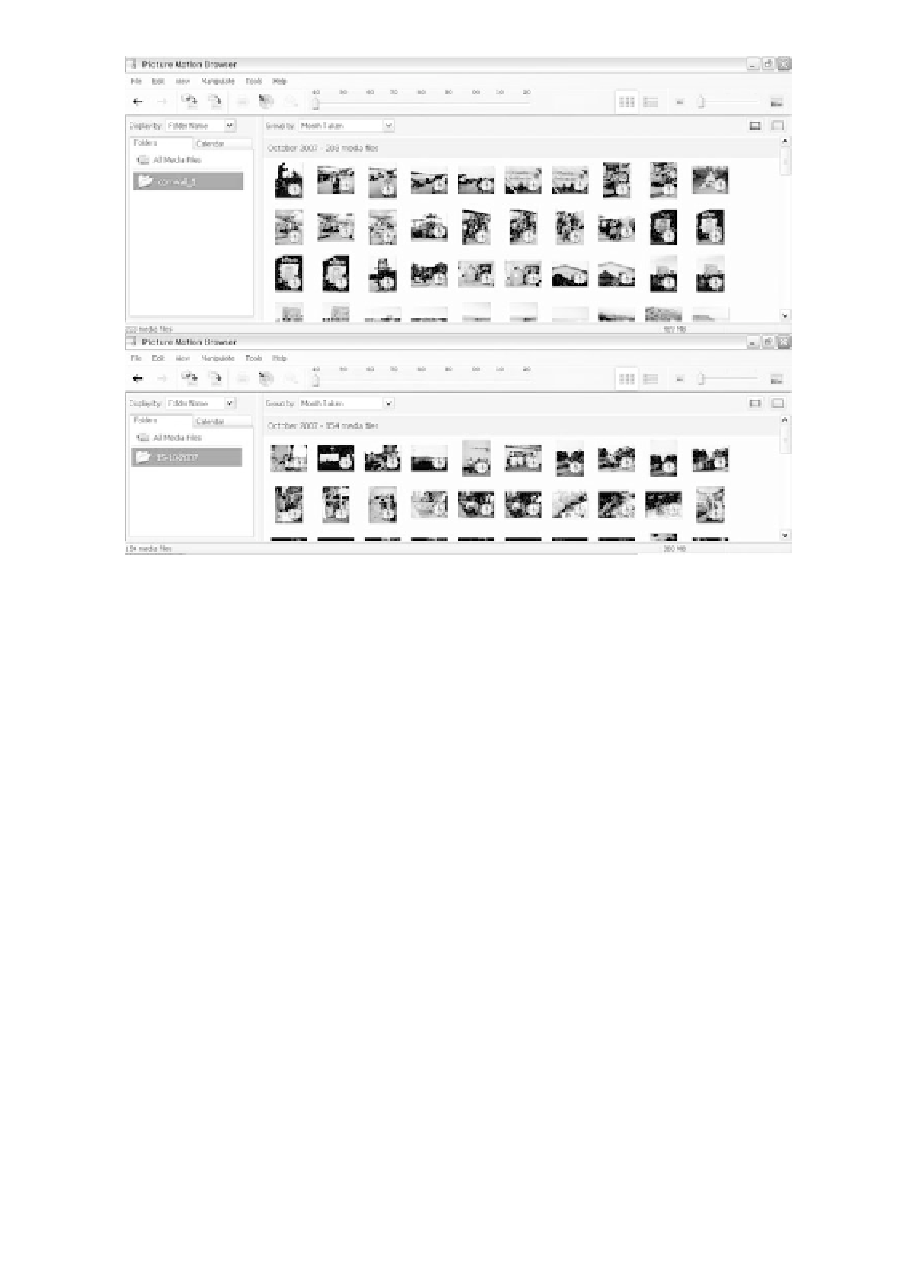Information Technology Reference
In-Depth Information
Figure 12.5
Correlated memory interface: photos from two peer group members are displayed next to each
other.
photographs, video, audio, text, or e-mails) is stored in specialized tables in
a relational implementation.
Another table is created to store events, along with related information and
different attributes such as event name, location, start and end time, expres-
sion, and links to other media. Relationships between various events are also
captured here. Date and time is attributed to the media content automatically
ensuring it can be easily sorted by the system. Photo and video properties
(latitude and longitude, date taken and modified, file name, size, etc.) can be
displayed by clicking the right mouse button. The user can display the location
of their photo or video by activating the online link button to Google's maps.
The system gives an option to the user to annotate their media content by
completing the text fields for names, events, and comments, and by choosing
from a drop down list to set a suitable expression (happy, sad, neutral, etc.).
Figure 12.8 shows the record insertion form for direct access to the user data-
base. The system provides direct manipulation techniques to facilitate natural
user-system interactions. In this paradigm, users can directly perform differ-
ent kinds of operations on items (events) of interest. Furthermore, combining
the query and presentation space alleviates the cognitive load from the user's
perspective, unlike traditional query environments. The user can display
the time a photo was taken with a person's GPS recorder location to create




